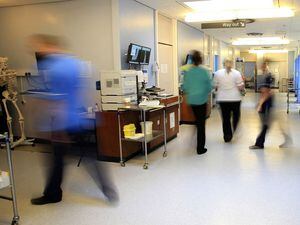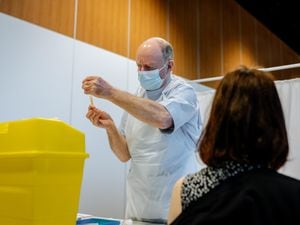Twenty hospital beds a day blocked in Shropshire
Twenty beds a day are occupied by patients who no longer need to be in hospital in Shropshire, figures released today reveal.

In a single month, a combined 600 days was spent by patients across Shropshire waiting to be discharged or transferred.
Figures from NHS England, which are for May, showed patients at Telford’s Princess Royal Hospital and Royal Shrewsbury Hospital, spent a total of 297 days waiting to be transferred to another care facility – equivalent to over 10 months.
At Robert Jones and Agnes Hunt Orthopaedic Hospital NHS Foundation Trust, which runs the orthopaedic hospital in Gobowen, a total of 184 days were spent by patients waiting, during the same month.
And patients at Shropshire Community Health NHS Trust , which runs community hospitals across the county, spent a total of more than 120 days waiting to be discharged or transferred.
Transfer of care
A 'delayed transfer of care' occurs when a patient remains in a bed after being officially declared ready for transfer.
Patients must be safe to transfer and signed off by both a doctor and a multidisciplinary team, which could include social or mental heath care workers, before they are classified in this way.
The figures do not include delays in transferring a patient between wards, or from one acute hospital to another.
Health bosses say they are working to reduce the delays.
Relatively low
Nigel Lee, chief operating officer at SaTH, said: “Discharge from hospital often involves a number of different teams in order to safely support patients going home with care or to a place of ongoing care.
“Significant work is taking place across the health and care system to address these issues.
"This work includes SaTH working with partners such as our commissioners, the Community Health NHS Trust and the local authorities.
“Locally, we have a relatively low level of delayed transfers of care and SaTH has one of the lowest levels of patients in hospital over three weeks in England.”
Nia Jones, director of operations at RJAH, said: “We are working with care providers and commissioners to reduce the number of delayed transfers of care, to improve the overall care of our patients.
“The aim is ultimately to be able to discharge our patients as soon as they are medically fit, while ensuring that they have the right rehabilitation and care package in their home setting.”
Steve Gregory, director of nursing at Shropcom, said the figures related to a small handful of patients with complex needs that must be met so that they can be discharged or transferred safely.
He added: "Sometimes it takes longer than we would like to enable the right support or service to be available.
“We work with others within the Shropshire care system to make sure any delay is kept to a minimum and, where possible, we look for learning or system changes that would help in similar situations in future.”
Initiatives
Shropshire and Telford & Wrekin Clinical Commissioning Groups say they work closely with their providers and social care partners to keep the time patients wait once ready for discharge to a minimum.
They say a number of initiatives have been introduced across health and social care in the last 12 months which have led to a significant reduction in the number of delays.
Delayed transfers of care can occur for a variety of reasons, including bed shortages at residential or nursing homes and delays in setting up home care packages.
They have the greatest impact on elderly patients.
According to the NHS, for a person over 80 a hospital stay of over 10 days can lead to 10 years of muscle ageing.
Across England, an average of nearly 4,500 beds a day were blocked in May, representing roughly 3.8 per cent of all occupied beds.
The government target is 3.5 per cent.
This resulted in a total of 139,204 'delayed' days, equivalent to just under 400 years of lost time.





